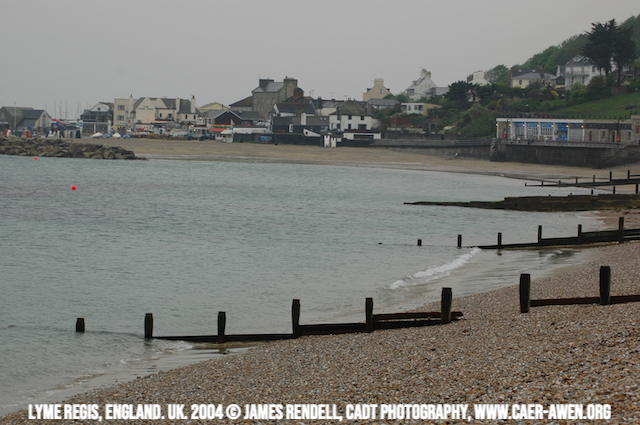These #photographs are of Avebury and Lyme Regis in the UK captured on the 28th April 2004.
If you are going to see Stonehenge then the "artfully reconstructed", see below, Woodhenge at Avebury is a close by attraction. Unlike Stonehenge's splendid isolation, Avebury's Henge is located within a village and in 2004 at least, grazing sheep, provide a lovely backdrop for photographs.
Lyme Regis is an easy drive from your day visiting Stonehenge and Avebury. James' nostalgia wanted to revisit a 1990 location and Lyme Regis position on the coast makes it a delightful place to have fish and chips at the Cobb Arms while watching the sun go down.
Lyme Regis is then a handy hop, skip and a jump away from your accomodation in Exeter close to the nightlife and the next day's train to London! The advantage for travellers in 2024 is that electronic maps provide a much easier navigation than a paper map book especially on rainy nights in the English Summer!
Above and Below: A selection of curated camera proofs with previously unpublished images.
Above and Below: A selection of curated camera proofs with previously unpublished images.
As always, The Galleries, Above, contain images of Lovely animals and Seagulls because we think their souls deserve to be remembered.
"Avebury (/ˈeɪvbəri/) is a Neolithic henge monument containing three stone circles, around the village of Avebury in Wiltshire, in southwest England. One of the best known prehistoric sites in Britain, it contains the largest megalithic stone circle in the world. It is both a tourist attraction and a place of religious importance to contemporary pagans.
Constructed over several hundred years in the third millennium BC, during the Neolithic, or New Stone Age, the monument comprises a large henge (a bank and a ditch) with a large outer stone circle and two separate smaller stone circles situated inside the centre of the monument. Its original purpose is unknown, although archaeologists believe that it was most likely used for some form of ritual or ceremony. The Avebury monument is a part of a larger prehistoric landscape containing several older monuments nearby, including West Kennet Long Barrow, Windmill Hill and Silbury Hill.
By the Iron Age, the site had been effectively abandoned, with some evidence of human activity on the site during the Roman period. During the Early Middle Ages, a village first began to be built around the monument, eventually extending into it. In the Late Medieval and Early Modern periods, local people destroyed many of the standing stones around the henge, both for religious and practical reasons. The antiquarians John Aubrey and William Stukeley took an interest in Avebury during the 17th and 18th centuries respectively, and recorded much of the site between various phases of destruction. Archaeological investigation followed in the 20th century, with Harold St George Gray leading an excavation of the bank and ditch, and Alexander Keiller overseeing a project to reconstruct much of the monument.
Avebury is owned and managed by the National Trust. It has been designated a Scheduled Ancient Monument, as well as a World Heritage Site, in the latter capacity being seen as a part of the wider prehistoric landscape of Wiltshire known as Stonehenge, Avebury and Associated Sites".
From: Wikipedia
Keep Smiling and Thank you for your Visit! Please Buy us a Coffee to Support our Community Work or Contact Us to Arrange to purchase a Print Sized Image or a signed limited edition print.












